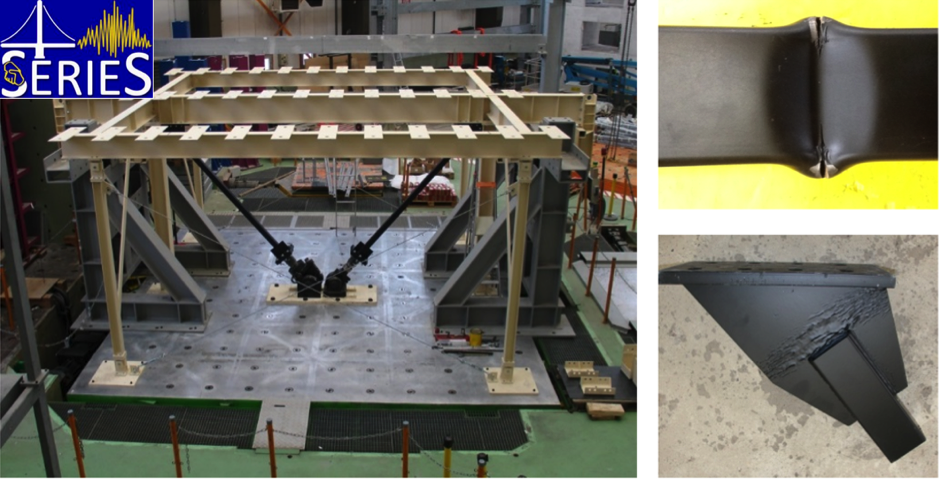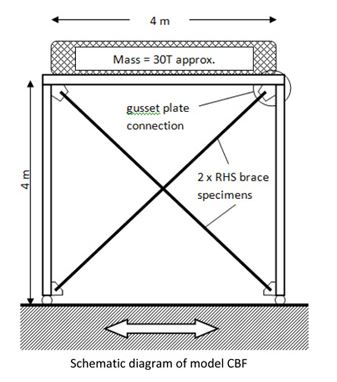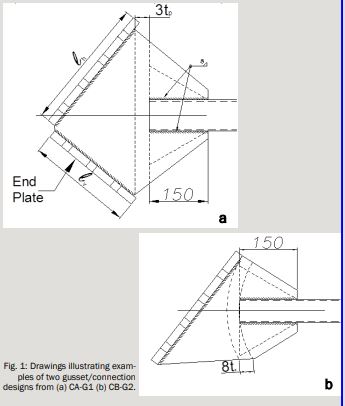
BRACED

- Title
-
SERIES – Brace Response and Assessment: Computation, Experiments and Design (BRACED)
- Start Date
-
10/02/2010
- End Date
-
31/05/2013
- Funding Body
-
SERIES – SEISMIC ENGINEERING RESEARCH INFRASTRUCTURES FOR EUROPEAN SYNERGIES
- Funded Under
-
FP7-INFRASTRUCTURES
- Coordinated By
-
PANEPISTIMIO PATRON, Greece
- Project Partners
- Principle Investigator
-
Jamie Goggins, NUI Galway
- Research Area
-
Energy
- Website
-
SERIES | Seismic Engineering Research Infrastructures for European Synergies (upatras.gr)
Introduction
Concentrically braced steel frames (CBFs) possess good stiffness and strength for drift control during frequent and moderate earthquakes, but a successful response to large earthquakes requires stable in-elastic cyclic brace yielding and buckling. The BRACED project investigated the ultimate behaviour of concentrically braced frames (CBFs).

Aim
The research programme was designed to validate empirical models for the ductility capacity of hollow section bracing members and recent proposals for the improved detailing of gusset plate connections, to identify active yield mechanisms and failure modes in different brace member/connection configurations, and to provide essential data on the earthquake response of European CBFs.
Work Packages
The central element of an integrated experimental and numerical research programme is a series of shake table experiments on full-scale model single-storey CBFs designed to Eurocode 8. Twelve separate experiments were performed on the Azalee seismic testing facility at CEA Saclay in the March-May 2013. The properties of the brace members and gusset plate connections were varied between experiments to examine a range of feasible properties and to investigate the influence of conventional and improved design details on frame response. Each experiment examined the response of the test frame and brace-gusset plate specimens to table excitations scaled to produce elastic response, brace buckling/yielding and brace fracture. These experiments were supported by complementary quasi-static cyclic tests on a simplified version of the shaking table test frame that retained all the important characteristics of that structure, including overall dimensions, beam-to-column connections, brace properties and gusset-plate connection design. Correlative pre-test predictions and post-test simulations using pushover and time-history analysis were also performed using the OpenSees seismic analysis software.

Deliverables
The outputs of the research programme represent a unique set of data on the ultimate earthquake response of CBFs with realistic brace members and connections. The principal experimental outcomes include measurements of elastic frame stiffness and its evolution with brace damage, measurements of the displacement ductility capacity of the brace specimens; an evaluation of the influence of brace connection configuration and gusset plate detailing on frame stiffness, damping and ductility; and observations on the contributions of brace and connection yielding to overall inelastic deformation of CBFs. The numerical modelling has validated a methodology of modelling this class of structure in OpenSees, while the project as a whole supports an assessment of Eurocode 8 design guidance for CBFs.

Publications
2019 Journal Of Constructional Steel Research, 154 :14-26 [DOI] [Details]
AY (2013) Brace Response and Assessment: Computation, Experiments and Design (BRACED). ‘Seismic engineering research infrastructures for European synergies (SERIES)’, Project No.: 227887, Brussels: SEVENTH FRAMEWORK PROGRAMME, Capacities Specific Programme, Research Infrastructure. [ARAN Link] [Details]
Contact
Contact: Jamie Goggins, NUI Galway
Email: ei.yawlagiun@sniggog.eimaJ



